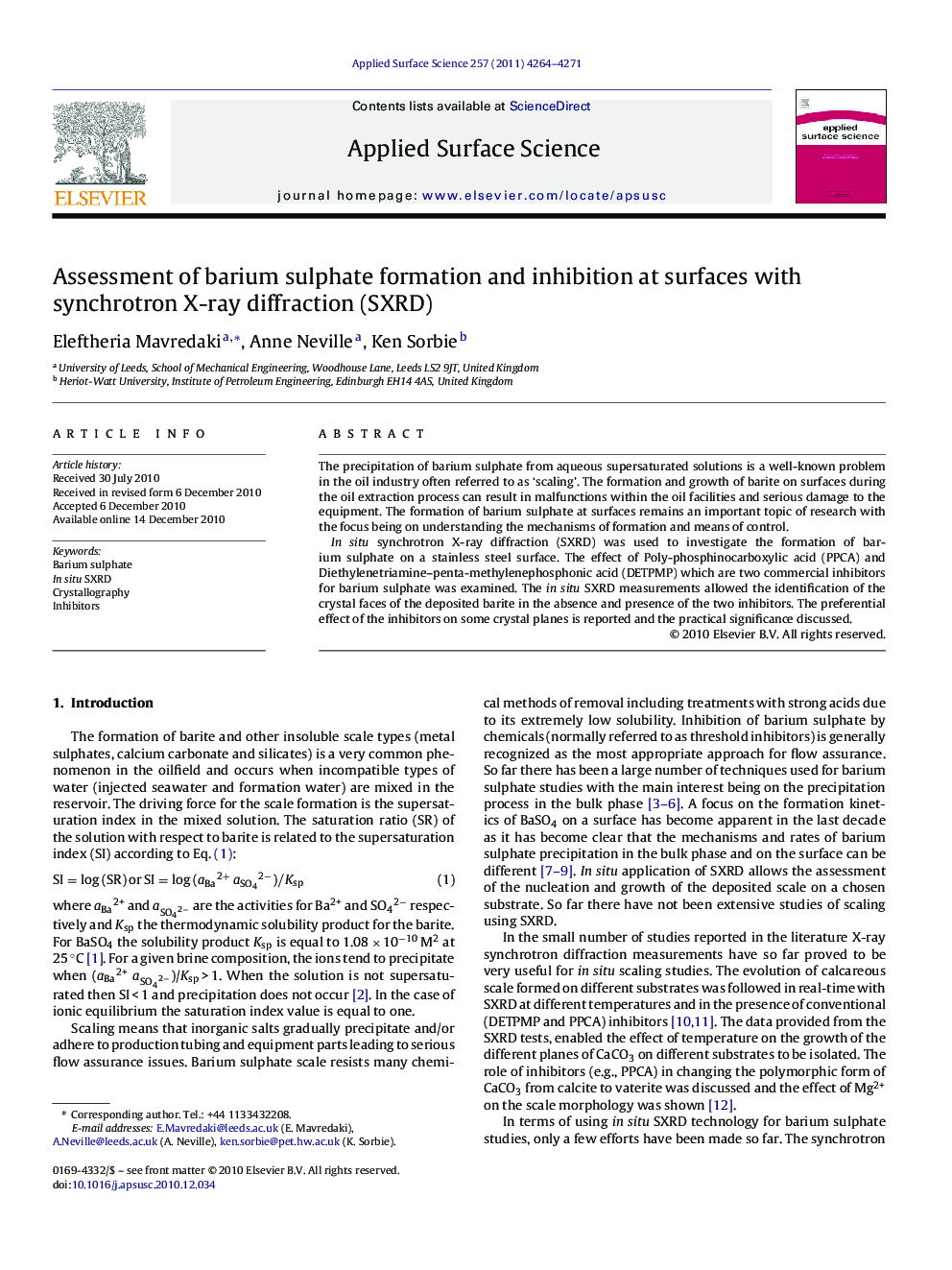| Article ID | Journal | Published Year | Pages | File Type |
|---|---|---|---|---|
| 5358911 | Applied Surface Science | 2011 | 8 Pages |
The precipitation of barium sulphate from aqueous supersaturated solutions is a well-known problem in the oil industry often referred to as 'scaling'. The formation and growth of barite on surfaces during the oil extraction process can result in malfunctions within the oil facilities and serious damage to the equipment. The formation of barium sulphate at surfaces remains an important topic of research with the focus being on understanding the mechanisms of formation and means of control.In situ synchrotron X-ray diffraction (SXRD) was used to investigate the formation of barium sulphate on a stainless steel surface. The effect of Poly-phosphinocarboxylic acid (PPCA) and Diethylenetriamine-penta-methylenephosphonic acid (DETPMP) which are two commercial inhibitors for barium sulphate was examined. The in situ SXRD measurements allowed the identification of the crystal faces of the deposited barite in the absence and presence of the two inhibitors. The preferential effect of the inhibitors on some crystal planes is reported and the practical significance discussed.
Research highlightsⶠThe main crystal faces of barium sulphate were identified from the in situ SXRD patterns in the absence and in the presence of inhibitors. The lattice planes of BaSO4 reveal the same growth trend on the surface independently of the supersaturation index and the temperature. ⶠAt 95 °C 10 ppm PPCA inhibits the growth of the dominant barite surfaces by 80%. ⶠAt 95 °C DETPMP performs as a nucleation inhibitor for barium sulphate formed on the surface. ⶠAn effective inhibition of barite occurs when the (0 1 1) and (1 1 1) crystal faces of BaSO4 are retarded. ⶠStrontium co-precipitates within the barite lattice resulting in formation of celestine barian. The growth of the celestine barian lattice planes follows the same growth trend with the one of the barite crystal faces.
